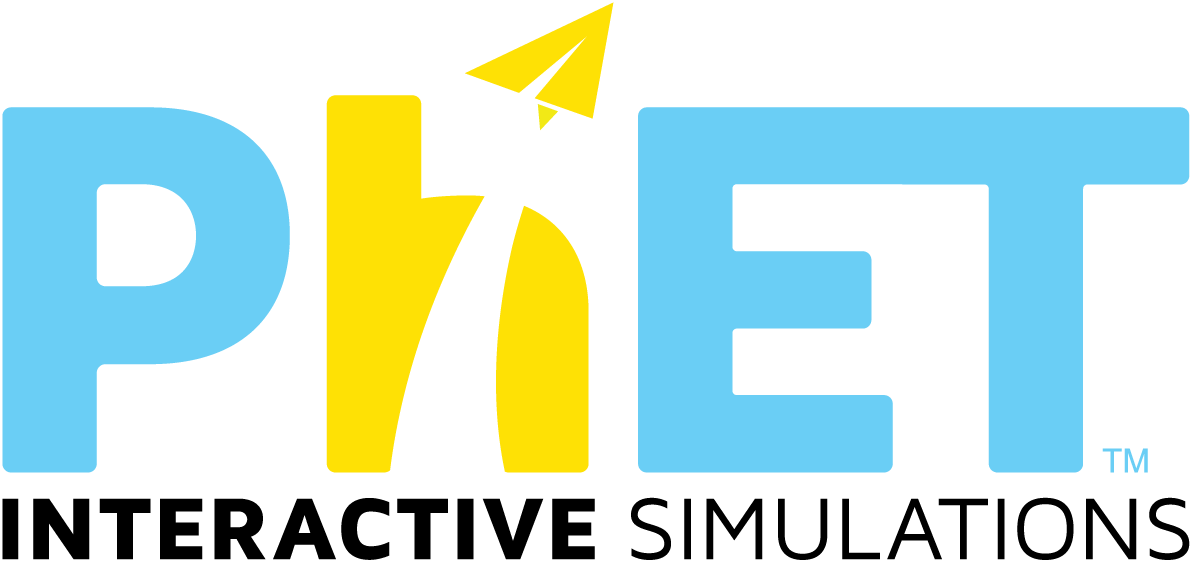184 kết quả tìm kiếm phù hợp với elementary charge
Các Mô phỏng
- Ẩm thực và Thể dục
- Băng hà
- Biểu thức (HTML5)
- Bong bóng và tĩnh điện (HTML5)
- Bong bóng và tĩnh điện
- Bộ lắp ráp mạch điện: DC (HTML5)
- Bộ lắp ráp mạch điện: DC - Phòng thí nghiệm ảo (HTML5)
- Cặp số (HTML5)
- Cân bằng (HTML5)
- Chất khí: phần giới thiệu (HTML5)
- Chọn lọc tự nhiên (HTML5)
- Chuyển động của Bọ rùa trong mặt phẳng
- Chuyển động của đạn tử (HTML5)
- Con lắc (HTML5)
- Con lắc lò xo: Phần cơ bản (HTML5)
- Công viên trượt ván.
- Công viên ván trượt: Phần cơ bản (HTML5)
- Cực tính của phân tử (HTML5)
- Sự Phân cực phân tử
- Diện tích (HTML5)
- Dung dịch muối và đường
- Đẳng thức: Phần cơ bản (HTML5)
- Điện tích bức xạ
- Điện tích và điện trường (HTML5)
- Điện trường
- Định luật Coulomb (HTML5)
- Đường thẳng số: Số nguyên (HTML5)
- Giao thoa sóng (HTML5)
- Giói thiệu Mô hình diện tích (HTML5)
- Hàm số: phần cơ bản (HTML5)
- Hiệu ứng Nhà kính (HTML5)
- Hiệu ứng nhà kính
- Hockey điện
- John Travoltage (HTML5)
- John Travoltage
- Khách bộ hành
- Khúc xạ ánh sáng (HTML5)
- Lực hấp dẫn: Phần cơ bản (HTML5)
- Lực hấp dẫn và quỹ đạo (HTML5)
- Lực và chuyển động: Phần cơ bản (HTML5)
- Mạch Bóng đèn
- Ma sát (HTML5)
- Máy phát điện
- Mật độ (HTML5)
- Mê lộ
- Muối và độ hoà tan
- Nam châm và la bàn (HTML5)
- Nam châm và nam châm điện (HTML5)
- Năng lượng: các dạng và sự chuyển hoá (HTML5)
- Nguyệt xa
- Nồng độ (HTML5)
- Phân số (HTML5)
- Phân số: đẳng thức (HTML5)
- Phân số: hỗn số (HTML5)
- Phân số: phần giới thiệu (HTML5)
- Phép nhân với mô hình diện tích (HTML5)
- Phòng thí nghiêm điện từ của FARADAY
- Phóng xạ Alpha
- Quả cân và lò xo
- Quang hình: Phần cơ bản (HTML5)
- Sân chơi tỷ lệ (HTML5)
- Sóng (HTML5)
- Sóng âm
- So sánh số (HTML5)
- Số học (HTML5)
- Số thập phân với mô hình diện tích (HTML5)
- Tán xạ Rutherford (HTML5)
- Tạo dựng nguyên tử (HTML5)
- Tạo ra 10 (HTML5)
- Tạo ra một Phân số (HTML5)
- Thái dương hệ (HTML5)
- Thị giác màu (HTML5)
- Tính chất của chất khí
- Trạng thái của vật chất: Phần cơ bản (HTML5)
- Trò chơi Ước lượng
- Tụ điện
- Tụ điện: phần cơ bản (HTML5)
- Tứ giác (HTML5)
- Tỷ số và tỷ lệ (HTML5)
- Vận chuyển qua màng tế bào (HTML5)
- Vui đùa với con số (HTML5)
Các công trình
- Moving Man, elementary
- Electrical Charge Lab
- Build an Atom
- How Can You Light A Bulb?
- Inquiry Based Modeling Static Electricity
- Charges and Fields Remote Lab Introduction to Static Electricity
- Coulomb's Law Lab
- Ladybug Motion in 3rd Grade
- Balloons and Static Electricity for Middle School
- Calculating the net charge of an atom/ion
- Colors, Bunnies and Wolves: does the strongest survive?
- Area Builder for grades 3-5
- Fraction Matcher Grades 3-5
- Eating and Exercise PhET: Body Systems grade 4-5
- Force and Motion Basics - Second grade
- Intro to Photoelectric Effect Interactive Lecture
- Introduction to Static Electricity using Electric Field Hockey and Charges and Fields (Inquiry Based)
- Electric Field Hockey Simulation Homework
- Elementary Pendulum Lab 4th-5th
- Mapping Electric Fields
- Interpreting Chemical Symbols
- Charge and Energy Conservation in Circuits Inquiry
- Electric Charge Basics
- Balloons and Static Electricity
- Describing Location and Movement
- Radioactive Decay
- Radioactive Decay - ILD
- Capacitor_Lab_Basics _html_Remote_lab
- Electric Fields & Point Charges
- Investigating Electric Fields
- Build an Atom - Guided-Inquiry Activity
- Capacitor Lab: Inquiry into Capacitor Design
- Building Fraction Sense Using “Fractions Intro PhET Simulation”
- Exploring Electric Charges
- Exploring the density of mysterious objects
- Float or Sink? An essay on the density of materials
- Build an Atom WebLab
- Heat or temperature
- Collecting and analyzing density data
- Comparing the properties of different materials
- Heat or temperature?
- High School Exploratory Lab for Balloons and Static Electricity
- Static Electricity
- Eating and Exercise Activity
- Geometric figures
- Activity in Electricity (Coulomb's Law)
- Electric Field Simulation Activity
- Electric Field and Potential Lab
- Salts and Solubility 5: Designer Salts (Inquiry Based)
- Exploring Electric Potential, Electric Field and Distance Relationships
- Balloons and Static Electricity | Remote Lab
- PhET Student Interactive Introduction on Capacitance & Dielectric Constants
- Electric Field and Electric Field Lines
- Capacitor Design Remote Lab
- Static Electricity Virtual Lab
- Electric fields
- C.A.S.T.L.E. Unit 2 Labs
- Charges and Charged Objects Investigation
- Electric Field Hockey Post Activity
- Electric Fields Simulation
- What Type of Light Bulb Should I buy for my Grandma?
- Measuring Current in a Series Circuit
- Electric Field Activity
- Atom Builder
- coulomb's Law
- Coulomb's law
- PhET activity guide
- Electric Field Hocket
- Charges & Fields PhET Lab
- Build an Atom, Isotope, & Ion
- Build an Atom: Introduction
- Force and Motion Sim Activity
- Energy Skate Park Basics: Énergie potentielle et cinetique
- (BNCC) Comparando as propriedades de diferentes materiais
- Build an Ion Inquiry Activity
- Coulombic Force Simulation Observations
- Static Electricity Lab!
- Build an Atom
- Homework Activity I
- Energy Forms and Changes
- Equipotential Surfaces Lab Activity
- Introduction to Electrostatics
- Determinine Electric Field Relationships
- 'Lectronic Plates
- Travoltage Lab
- Lab: PhET Build an Atom
- Chemistry - Introduction to Coulomb's Law
- Lab: Electric Field and Potential
- Charges and Fields Exploration
- The capacitance of a parallel-plate capacitor, effects of dielectric in a capacitor
- Electric field - patterns and strength
- Charging By Rubbing
- Capacitor and Dielectric 2
- PHET Charges and Fields Activity Part 1
- How do PhET simulations fit in my middle school program?
- Electric Field Lab
- Kirchhoff's Law
- Guided Inquiry - Electric Fields
- Playing with atoms
- MS and HS TEK to Sim Alignment
- Capacitor Lab: Basics: Inquiry into Capacitor Design
- Coulomb's Law Data Collection and Analysis (remote online learning)
- Computer Simulations as a Tool to Assist Teaching Basics of Electromagnetism (Simulações Computacionais Como Ferramenta Auxiliar ao Ensino de Conceitos Básicos de Eletromagnetismo)


